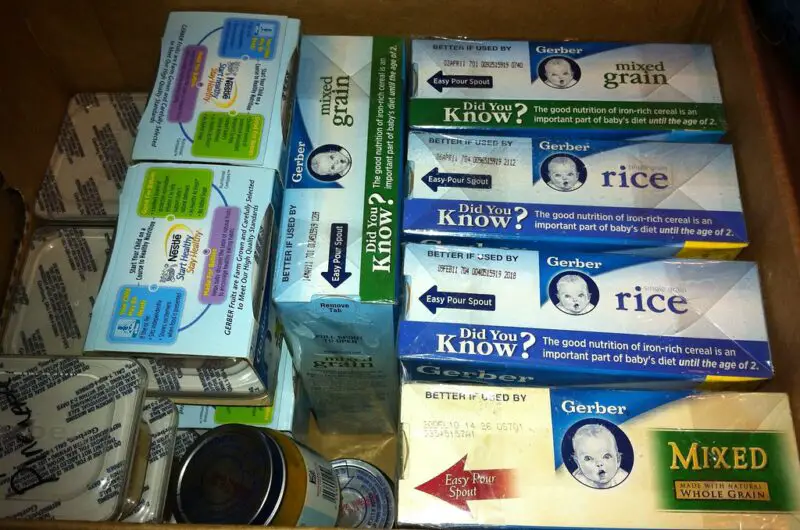Expiration dates are printed on nearly every packaged food item we buy, from milk cartons to canned goods to bags of frozen peas. They seem authoritative, a definitive marker of when food goes from “safe and delicious” to “potentially hazardous.” But how accurate are these dates, really? Do they truly indicate when food is no longer good to eat, or are they more of a suggestion than a hard rule? For anyone who’s ever hesitated over a slightly past-due yogurt or wondered if that can of soup from 2019 is still edible, these questions matter. The truth is, expiration dates are less about food safety and more about quality, industry standards, and consumer behavior than most people realize. In this article, we’ll unpack the reality behind expiration dates and share practical, science-backed ways to determine if your food is still good to eat.
What Do Expiration Dates Actually Mean?
To understand whether expiration dates are accurate, we first need to clarify what they represent. Contrary to popular belief, most expiration dates aren’t a hard deadline for when food becomes unsafe. In the United States, for example, the federal government doesn’t require expiration dates on most foods, except for infant formula and some baby foods. The dates you see—like “Best By,” “Sell By,” or “Use By”—are largely determined by manufacturers, not regulators. These labels are more about peak quality than safety.
- “Best By” or “Best Before”: This indicates when the manufacturer thinks the product will be at its optimal flavor, texture, or nutritional value. After this date, the quality might decline, but the food is often still safe to eat.
- “Sell By”: This is a guideline for retailers, telling them how long to display the product for sale. It accounts for some shelf life at home, so food past its “Sell By” date isn’t necessarily spoiled.
- “Use By”: This is the closest to a safety-related date, typically found on perishable items like meat or dairy. It suggests the last day the product is expected to be at peak quality, though it may still be safe beyond that if stored properly.
The lack of standardization means expiration dates can vary widely between brands, even for identical products. A jar of salsa might have a “Best By” date six months out from one company and a year from another, based on their testing or marketing choices. This inconsistency highlights a key point: expiration dates are often conservative estimates, not precise expiration points.
Why Expiration Dates Aren’t Always Accurate
Manufacturers set expiration dates with a buffer, erring on the side of caution to protect their reputation and avoid liability. They use lab tests, focus groups, and storage simulations to estimate how long a product retains its intended quality under ideal conditions (e.g., unopened, stored at the right temperature). But real life doesn’t always match those conditions. A bag of chips might stay crisp longer if you seal it tightly, or milk might spoil faster if your fridge isn’t cold enough.
Another factor is consumer psychology. Studies suggest that people are more likely to throw out food as soon as it hits the date on the package, even if it’s perfectly fine. Manufacturers know this and may shorten expiration timelines to encourage frequent repurchasing. In some cases, it’s less about the food going bad and more about keeping inventory moving.
Then there’s the issue of food waste. Globally, about a third of all food produced is wasted, and in the U.S. alone, confusion over expiration dates contributes to billions of dollars’ worth of edible food being discarded annually. Advocacy groups like the Natural Resources Defense Council have pushed for clearer labeling, arguing that the current system misleads consumers into thinking “expired” food is dangerous when it often isn’t.
So, are expiration dates accurate? Not always—or at least, not in the way we might assume. They’re a starting point, not a finish line. To really know if food is still good, we need to go beyond the label and trust our senses, storage habits, and a bit of food science.
How to Tell if Food Is Still Good: A Practical Guide
Expiration dates can guide us, but they’re not the final word. Here’s how to evaluate different types of food to decide if they’re still safe and palatable, broken down by category.
Dairy (Milk, Cheese, Yogurt)
Dairy products often carry “Use By” dates, and they’re prone to spoilage due to high water content and natural bacteria. But the date isn’t a magic cutoff.
- Milk: Smell it first—if it’s sour or rancid, it’s gone bad. Look for curdling or an off color (yellowish instead of white). Pasteurized milk typically lasts a few days to a week past its date if kept at 35–40°F (2–4°C). If it passes the sniff test and looks fine, it’s usually safe to use, especially for cooking.
- Cheese: Hard cheeses like cheddar or Parmesan can last months beyond their date if unopened, thanks to low moisture and high salt content. Mold on hard cheese can be cut away (remove at least an inch around it), and the rest is fine. Soft cheeses like brie or cream cheese are trickier—discard them if you see mold or smell ammonia.
- Yogurt: Unopened yogurt can be good for 2–3 weeks past its date, and even opened, it might last a week or two if it smells and tastes normal. The live cultures in yogurt act as a natural preservative, slowing spoilage.
Tip: Store dairy on the fridge’s middle shelves, not the door, where temperature fluctuates.
Meat, Poultry, and Fish
Raw meat and seafood are more time-sensitive due to bacteria like Salmonella or Listeria. The “Use By” date here is worth heeding, but proper storage can extend usability.
- Raw Meat/Poultry: If it’s past the date but smells fresh (not sour or sulfurous) and isn’t slimy or discolored, it’s likely okay. Freezing before the date stops the clock—meat can last 6–12 months frozen. Cooked meat lasts about 3–4 days in the fridge past its date if it looks and smells fine.
- Fish: Fresh fish should have a mild, ocean-like smell, not a strong “fishy” odor. Past the date, check for sliminess or dull, cloudy flesh. Frozen fish can last 6–9 months.
- Deli Meats: Unopened packs can go a couple of weeks past the date; opened, they’re good for 3–5 days. Sliminess, off smells, or iridescent sheen mean it’s time to toss them.
Tip: Freeze meat if you won’t use it by the date—thaw it safely in the fridge when ready.
Eggs
Eggs are a classic example of expiration-date confusion. The “Sell By” or “Pack Date” (a Julian date like “032” for February 1) is often misread as an expiration.
- How to Test: Drop an egg in a glass of water. Fresh eggs sink; older but still-good eggs tilt or stand upright; bad eggs float (due to gas buildup from spoilage). Past the date, eggs can last 3–5 weeks in the fridge if they pass this test and have no cracks or off odors when opened.
- Storage): Keep eggs in their carton on a fridge shelf to maintain humidity and temperature.
Pantry Staples (Canned Goods, Dry Goods, Spices)
Dry and canned foods often outlast their dates by months or even years.
- Canned Goods: High-acid foods (tomatoes, pineapple) last 12–18 months; low-acid (vegetables, meat) can go 2–5 years. Check for bulging, rust, or leaks—those are signs of spoilage. If the can’s intact and the food smells and looks normal, it’s typically safe.
- Pasta/Rice/Cereal: Unopened, these can last years past their date in a cool, dry place. Once opened, watch for pantry pests (tiny bugs) or rancid smells from oils in whole grains.
- Spices: They don’t spoil but lose potency after 1–3 years. Sniff them—if the aroma’s weak, they won’t add much flavor, but they’re still safe.
Tip: Store pantry items away from heat and light to maximize shelf life.
Bread and Baked Goods
Bread’s “Best By” date is about staleness, not safety, unless mold appears.
- Bread: Past the date, it might be dry but fine if there’s no mold. Freezing extends life for months. Moldy spots mean toss the whole loaf—spores spread invisibly.
- Pastries: Cream-filled items spoil faster (check for sour smells); dry cookies or cakes can last weeks if sealed.
Tip: Refrigerate bread to slow mold, though it may dry out faster.
Fruits and Vegetables
Fresh produce rarely has dates, but packaged items like bagged salads do.
- Fresh Produce: Wilted greens or soft spots don’t always mean it’s bad—cut away the bad parts. Slimy textures or foul odors are the real red flags.
- Packaged Salads: Past the date, check for slime, browning, or off smells. Unopened bags can last a few days extra if stored cold.
Tip: Store fruits and veggies separately—some fruits (like apples) release ethylene gas that speeds up spoilage.
General Rules for Judging Food Safety
Across all categories, your senses are your best tools:
- Smell: Spoiled food often smells sour, rancid, or “off.” Trust your nose.
- Sight: Look for mold, discoloration, or texture changes (slime, mushiness).
- Taste: If it looks and smells okay, a tiny taste can confirm. Spit it out if it’s off.
- Storage Matters: Food lasts longer if kept at the right temperature (fridge at 35–40°F, freezer at 0°F) and in sealed containers.
When in doubt, the “better safe than sorry” rule applies—especially with high-risk foods like meat or dairy if you’re immunocompromised. But for low-risk items like crackers or canned soup, stretching past the date is often fine.
The Bottom Line: Expiration Dates as a Guide, Not Gospel
Expiration dates aren’t as accurate as we might think—they’re a mix of science, caution, and commerce. They’re useful for gauging peak quality, but they don’t tell the full story of whether food is still good. By combining label info with sensory checks and smart storage, you can confidently reduce waste and save money without risking your health.
Next time you’re staring down a “past-due” carton of eggs or a jar of pickles, don’t just chuck it. Sniff, inspect, and consider the context. You might be surprised how much “expired” food is still perfectly good—and how much power you have to decide for yourself.


















